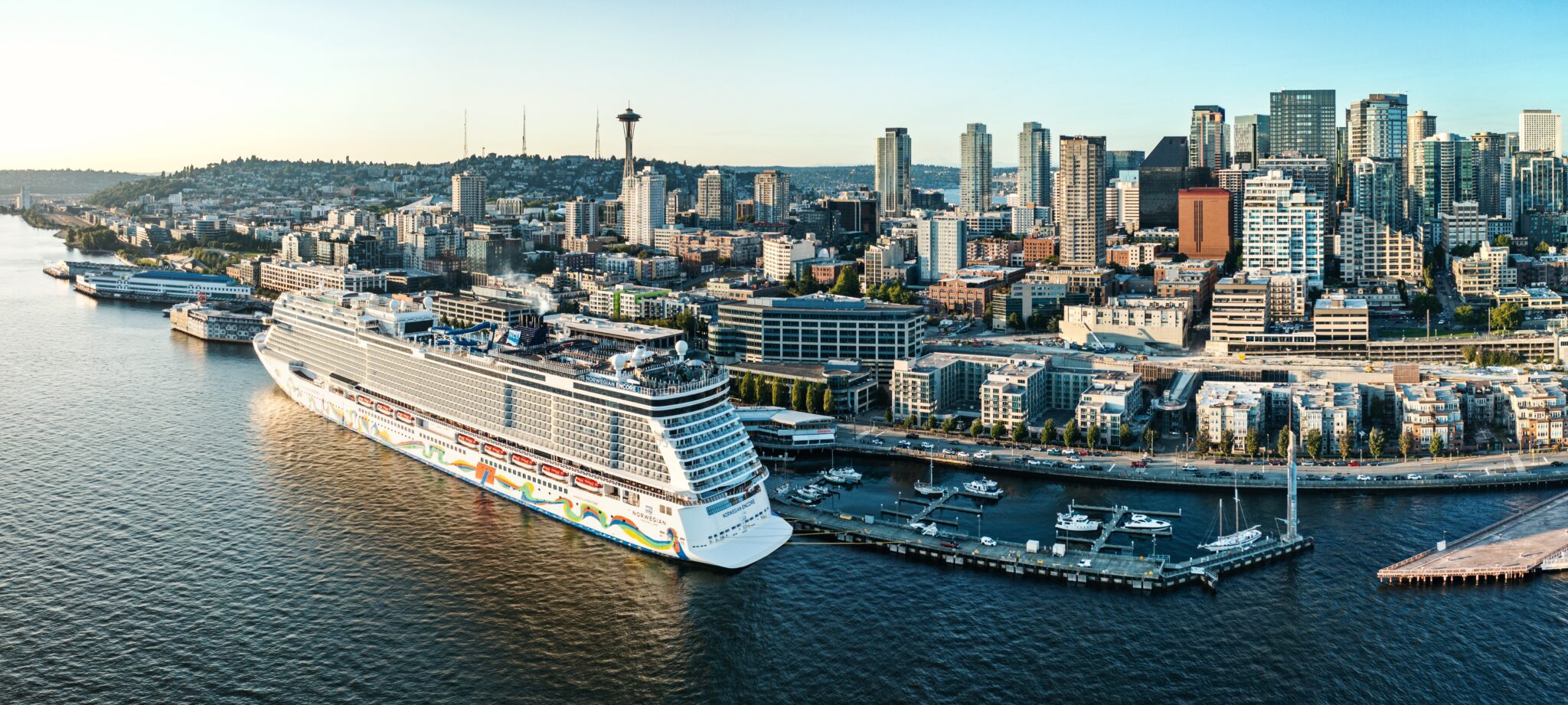
Summer is cruise ship season, which means more ships are spending time in port preparing for their next departure, running their engines to provide the energy they need to operate onboard services — and emitting greenhouse gases.

However, a series of projects are underway to make the Port of Seattle one of the greenest and most energy-efficient ports in North America. Seattle City Light is a contributing partner alongside the Port of Seattle and Northwest Seaport Alliance (NWSA) for the Seattle Waterfront Clean Energy Strategy (SWCES). The strategy aims to phase out seaport-related emissions by 2050. But, how does the Port balance sustainability with economic growth? One solution is shore power.
What is shore power?
Shore power is a key environmental strategy to eliminate emissions from ships while in port. Shore power provides a power connection for ships to access City Light’s clean, carbon-neutral energy. This means they can plug in and turn off their diesel engines. To put things into perspective, a ship connected to shore power eliminates the emissions equivalent of an average car driving round trip from Seattle to New York 30 times.
Currently, the Port of Seattle has two shore power connections at the Smith Cove Cruise Terminal at Pier 91 that have been active for years. City Light is supporting the Port’s project to provide shore power for ships at Pier 66, which recently completed design and concluded a Public Works bidding process. Construction should begin this summer on Terminal 46 and Pier 66, which includes connecting a 6,000-foot submersible cable from Terminal 46 to Pier 66.
How does City Light meet the energy demand of more ships adopting shore power?
Providing shore power for all vessel types — cargo, cruise, fishing and workboats — is an essential part of the strategy. The SWCES work has completed a forecast of all major waterfront electric loads, including locations, amounts and timing of new loads. With that milestone accomplished, City Light knows which sites need additional power solutions to handle future loads. These may be more traditional, such as additional or larger wires, or non-traditional, such as focusing on efficiency, storage, clean-distributed generation, or load management.
Having this electrical capacity is crucial to meet the loads when they come, to reduce environmental impacts and to help improve air quality along our waterfront. City Light’s collaboration with the Port and NWSA has been tremendously valuable: We’re able to choose the most appropriate path for each terminal, stay informed of each other’s key considerations and benefit from the collective knowledge and wisdom of all partners.
So, starting in 2024 and beyond, the next time you see ships in port, we can all breathe a little easier knowing that we’re taking the right steps toward reducing our emissions and improving the air quality of our area.